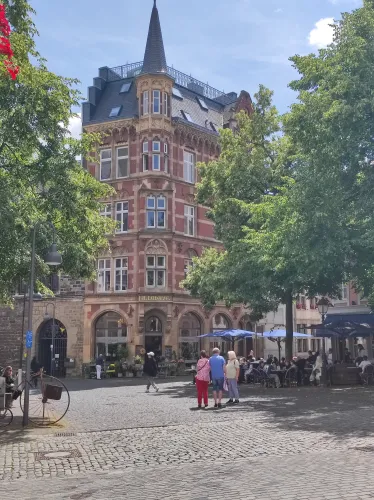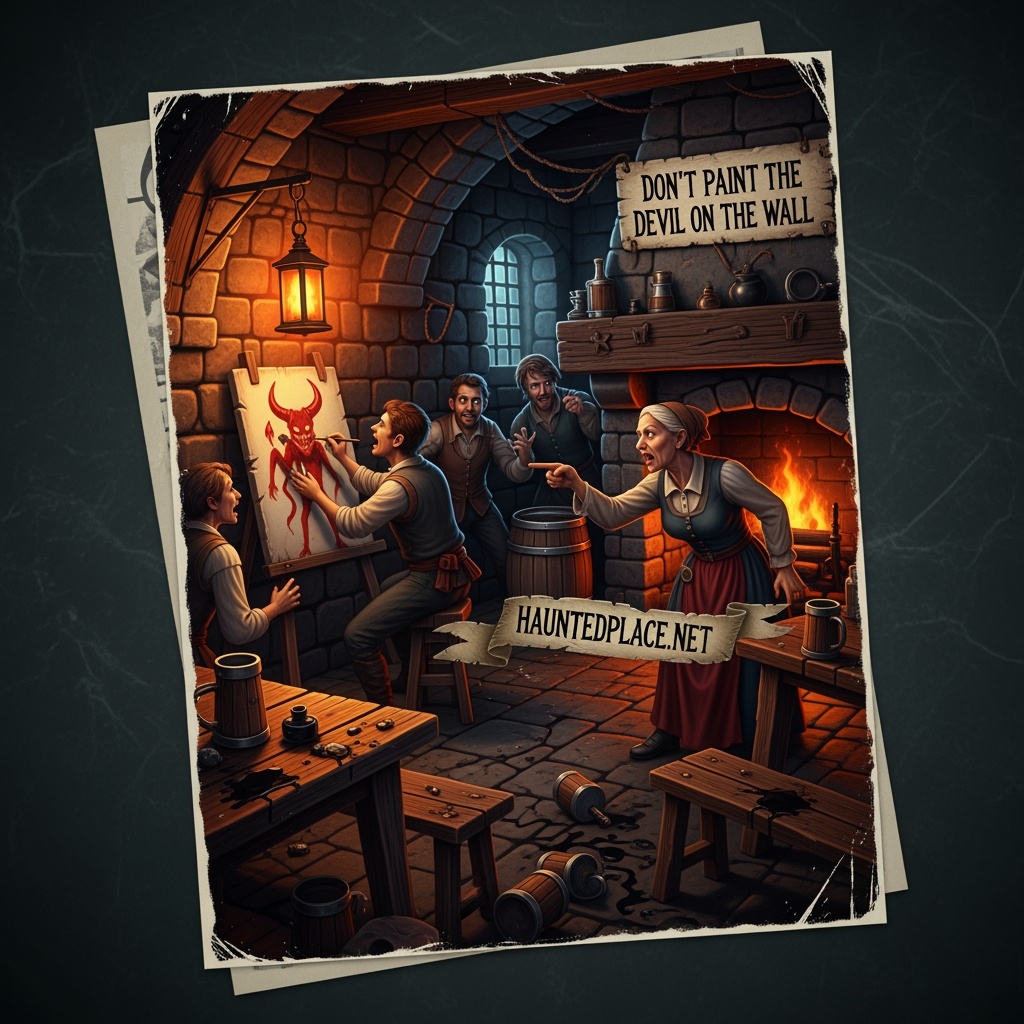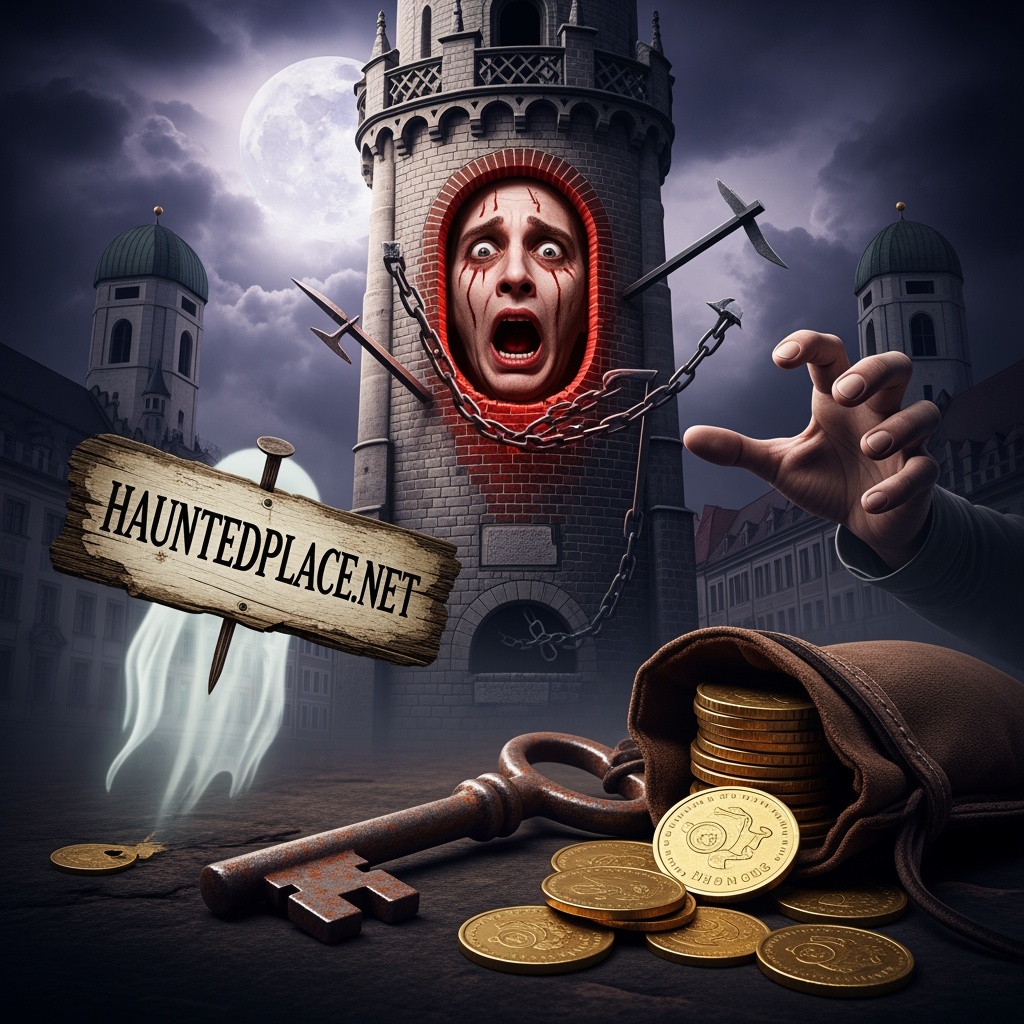
Aachen, the historic city with its magnificent buildings and rich traditions, is not only a place of cultural heritage, but also of mysterious legends. One of these fairy tales is the story of the Bahkauv, a monster that hides deep in the city’s sewers and occasionally finds its way to the surface—especially when drunken night owls return home. The Bahkauv is not a pleasant creature, but a veritable monster. Its gruesome appearance makes even the bravest tremble: with its sharp, menacing teeth grinning from a calf’s face, its scaly skin and long, lashing tail, it could have come straight out of a nightmare. And the smell it gives off—a mixture of old dirt and decay—betrays its origins in the darkest depths of the sewers. After a night of partying and drinking, there is hardly anything worse for a reveler returning home in Aachen than suddenly coming face to face with the Bahkauv. One can imagine the horror of stumbling heavily through the nighttime alleys and emerging from the shadows to encounter this hideous creature. It is understandable that the drunken men ultimately want nothing more than to get home unharmed without having to carry the monster on their shoulders. But the Bahkauv’s will is relentless. Once it has decided that a poor returner should serve as its carrier, there is no escape. The men beg for mercy in vain, try to shake off the monster or escape it – all of which only makes it harder. The Bahkauv knows no mercy, and it will get what it wants. Historically, the legend of the Bahkauv was used as a warning against excessive alcohol consumption and nocturnal debauchery. The old legends tell of how the Bahkauv chooses its victims and haunts drunkards to humiliate them and teach them a lesson. It was intended to admonish the citizens of Aachen to exercise restraint and behave responsibly. But where does the legend of the Bahkauv actually come from? Its origins are difficult to pin down, but it is believed to date back to the Middle Ages. At a time when monsters and mythical creatures were firmly anchored in popular belief, the idea of a cruel creature living underground in the city offered an explanation for the strange noises and inexplicable phenomena that occurred at night. The fear of the Bahkauv was so strong that protective rituals were even developed to ward it off. Some people returning home wore amulets or tried to protect themselves with songs and prayers. It was also believed that certain herbs and plants could keep the Bahkauv away – mugwort, for example, was a popular repellent. Over time, the Bahkauv became a fixture in Aachen’s folklore. Stories and songs about the monster were passed down from generation to generation, and even today, many residents are familiar with the creepy tale. However, as with many legends, there are different interpretations and variations. Although the legend of the Bahkauv once spread terror, today it is more of an amusing relic from times gone by. Tourists and locals alike enjoy the stories spun around the monster. Guided tours and city walks often include visits to places associated with the Bahkauv, keeping the legend alive. Even if an encounter with a monster like the Bahkauv might seem terrifying at first glance, the story has a certain charm, a touch of nostalgia and adventure. The idea that an ancient creature lurks deep beneath the city of Aachen, ready to teach the unwary a lesson, adds to the city’s mystical aura. Thus, the Bahkauv will continue to be part of Aachen’s urban folklore, a legendary creature of horror that is always a topic of conversation and sends a slight shiver down the spines of night owls returning home. And who knows—maybe someone will encounter this eerie companion one day. But be warned: if the Bahkauv wants something, it will get it.


















